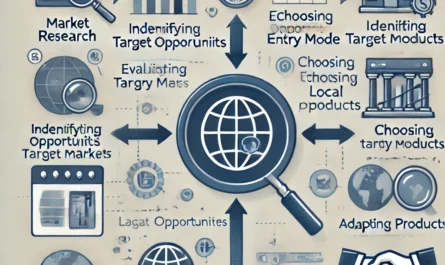Running a small business often means wearing many hats, but few responsibilities are as crucial as developing an effective marketing strategy. Without a plan to attract and retain customers, even the best products and services can go unnoticed. This guide dives deep into how to create an effective marketing strategy for your small business, empowering you to maximize growth, brand awareness, and customer loyalty.
How to Create an Effective Marketing Strategy for Your Small Business
Marketing your small business is fundamentally different from marketing a large corporation. With limited resources and a smaller team, small businesses must approach their strategies with creativity, precision, and an understanding of their unique place in the market. An effective marketing strategy doesn’t just boost sales—it establishes a brand, builds customer trust, and positions your business as a leader in your niche.
Understanding Your Target Market
One of the first steps in developing a marketing strategy is understanding exactly who your audience is. Knowing your customer base allows you to tailor your messaging, channels, and content to meet their needs effectively.
Identifying Your Ideal Customer Persona
Building a customer persona involves creating a detailed profile of your ideal customer. Think about their age, gender, income level, interests, and pain points. By deeply understanding who they are, you can create content that speaks directly to their needs and desires, increasing your chances of connecting with them.
Market Segmentation: The Key to Relevance
Not all customers are created equal. By segmenting your market into specific groups based on demographics, purchasing behavior, and preferences, you can ensure that your marketing efforts are relevant and focused. Market segmentation also helps you avoid wasting resources on customers unlikely to convert.
Setting Clear Marketing Objectives
Once you’ve identified your audience, it’s time to set your marketing objectives. These should guide your strategy and help measure success.
The SMART Goals Framework
SMART goals are Specific, Measurable, Achievable, Relevant, and Time-bound. For example, a SMART marketing goal could be “increase website traffic by 20% over the next quarter through targeted SEO efforts.” These clearly defined goals give your strategy direction and ensure you stay on track.
Aligning Marketing Goals with Business Objectives
Your marketing goals should always align with broader business objectives. If your goal is to grow revenue by 15% in the next year, your marketing efforts should focus on increasing sales leads, improving conversion rates, or enhancing customer retention.
Building a Strong Brand Identity
Your brand is more than just your logo—it’s the heart of your business. A clear brand identity makes your small business memorable, credible, and trustworthy.
Crafting a Unique Selling Proposition (USP)
Your USP differentiates you from competitors. It’s what makes your small business stand out in a crowded marketplace. Whether it’s exceptional customer service, innovative products, or a commitment to sustainability, your USP should be central to your marketing strategy.
Visual Identity: Logos, Colors, and Fonts
Your visual identity plays a crucial role in how customers perceive your brand. Consistency in logos, colors, and fonts across all marketing materials—from your website to social media profiles—helps to create a cohesive and professional brand image.
Choosing the Right Marketing Channels
In today’s digital age, businesses have a multitude of platforms to reach their audience. The challenge lies in choosing the right ones.
Social Media Platforms for Small Businesses
Platforms like Facebook, Instagram, and LinkedIn can offer significant reach for small businesses, depending on your target market. For instance, Instagram is ideal for visually-driven brands, while LinkedIn is better suited for B2B marketing.
Traditional vs. Digital Marketing
While digital marketing has dominated in recent years, don’t underestimate the power of traditional marketing methods like print ads, direct mail, or local events, especially for local businesses. The best strategies often combine the strengths of both traditional and digital approaches.
Developing Your Content Strategy
Great content is at the core of an effective marketing strategy. It helps establish authority, build relationships, and drive conversions.
The Power of Storytelling in Marketing
Storytelling engages your audience by making your brand relatable. Whether through blog posts, video content, or social media updates, share the story of how your small business solves problems, serves the community, or strives to innovate.
Content Types: Blogs, Videos, and Social Media Posts
Diversifying your content allows you to reach different segments of your audience. Blogs can improve your website’s SEO, videos can explain complex ideas in a digestible format, and social media posts can foster real-time engagement with your customers.
Optimizing Your Website for Conversions
A well-designed website is not just an online presence—it’s your most valuable marketing asset.
User Experience and Website Design
Your website should be easy to navigate, mobile-friendly, and fast-loading. A confusing or slow site can drive potential customers away, so focus on creating a user experience that is intuitive and enjoyable.
SEO Basics for Small Businesses
Search Engine Optimization (SEO) is crucial for ensuring that your small business gets found online. Basic SEO techniques like optimizing meta descriptions, using appropriate keywords, and building backlinks can significantly improve your website’s visibility in search engines.
You can also read; How to Implement Lean Management for Operational Efficiency
Leveraging Social Media Marketing
Social media marketing can be one of the most cost-effective ways to reach your audience, especially for small businesses on a tight budget.
Organic Social Media vs. Paid Advertising
Organic marketing involves growing your social media presence without paying for ads. This requires consistency and engaging content. Paid advertising, such as Facebook Ads, allows you to target specific demographics and interests, ensuring that your content reaches potential customers.
Best Practices for Engagement and Growth
Responding to comments, posting regularly, and sharing user-generated content can significantly increase engagement on your social media platforms. The more you interact with your audience, the stronger your brand’s online presence will become.



